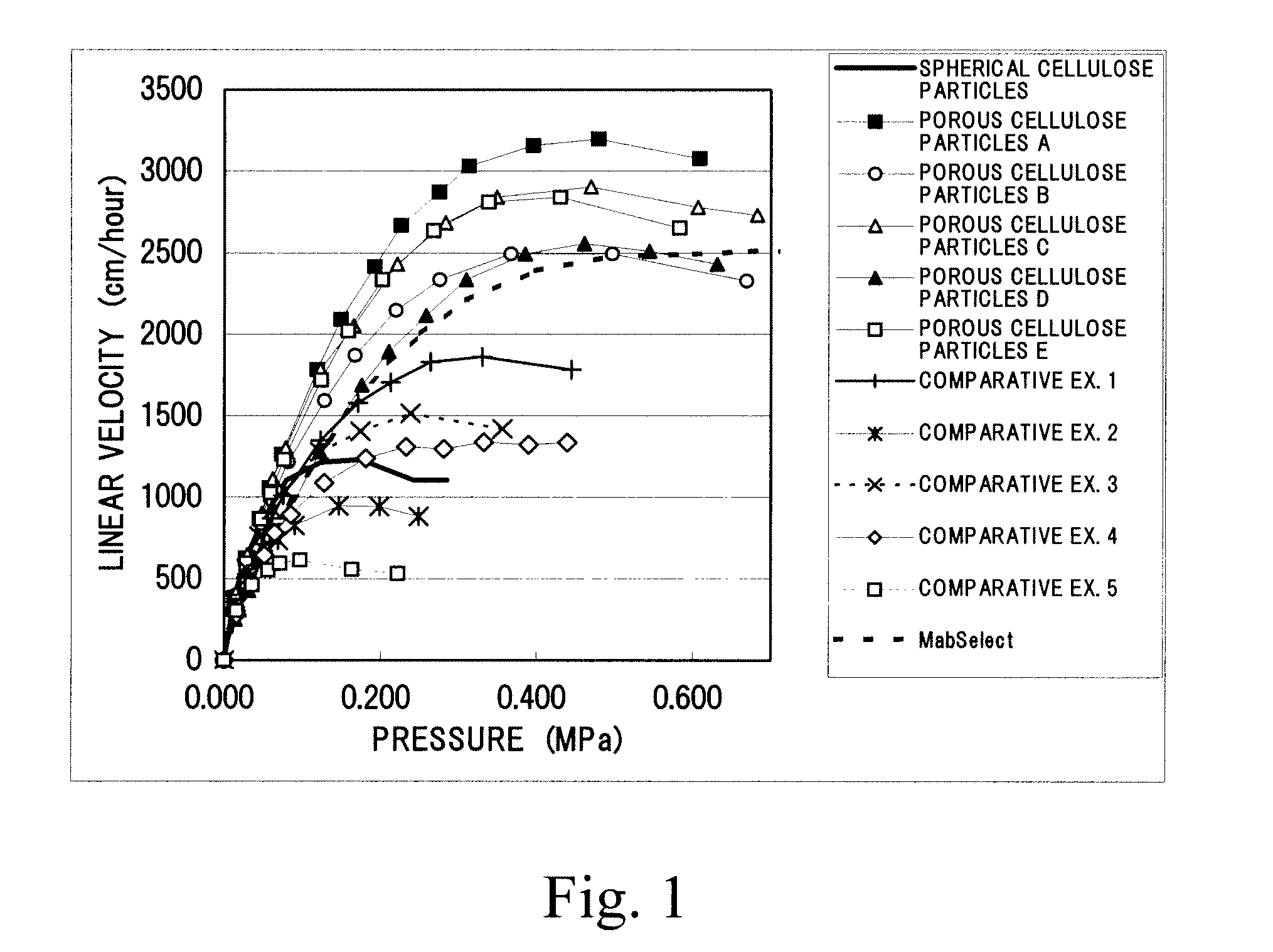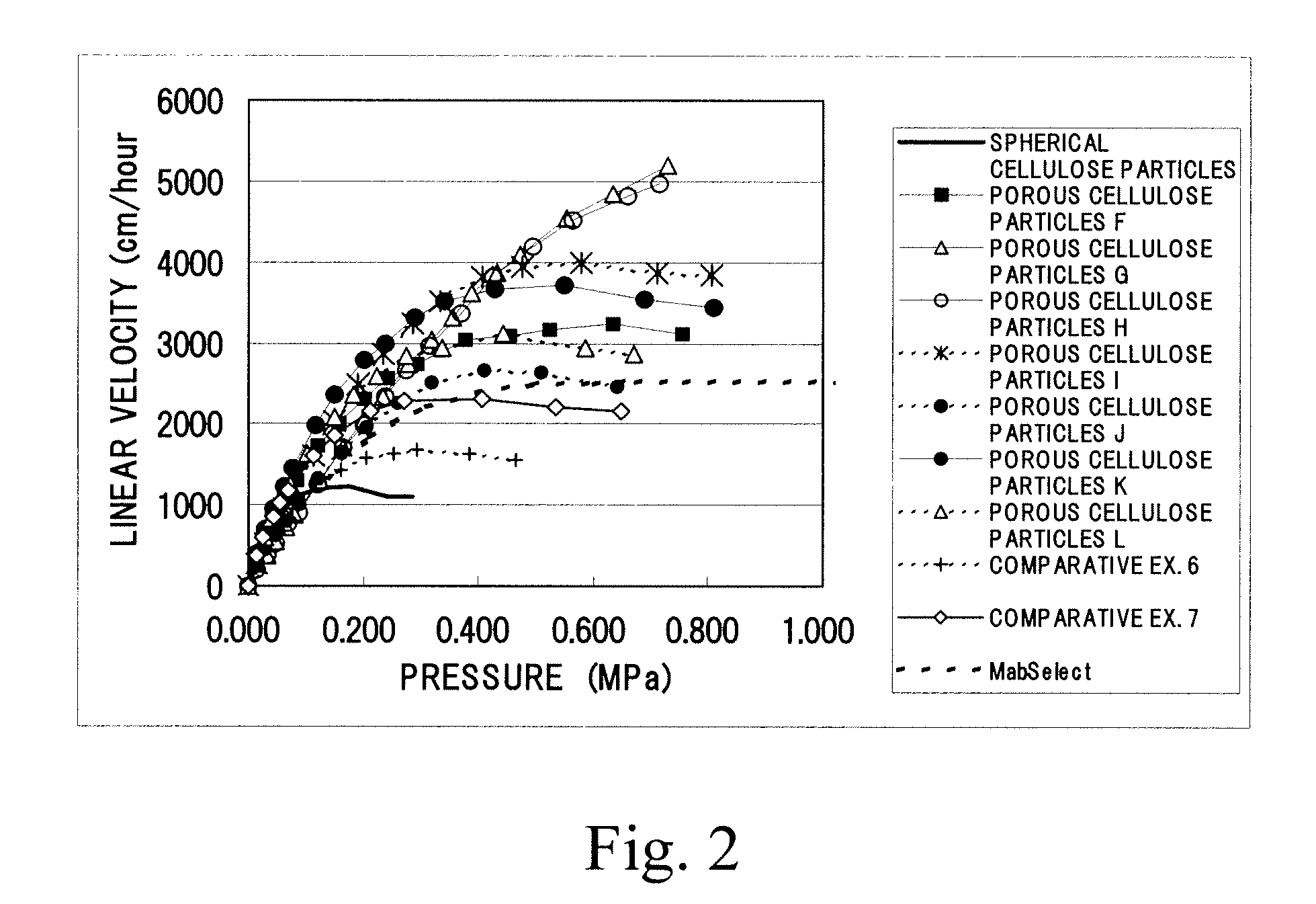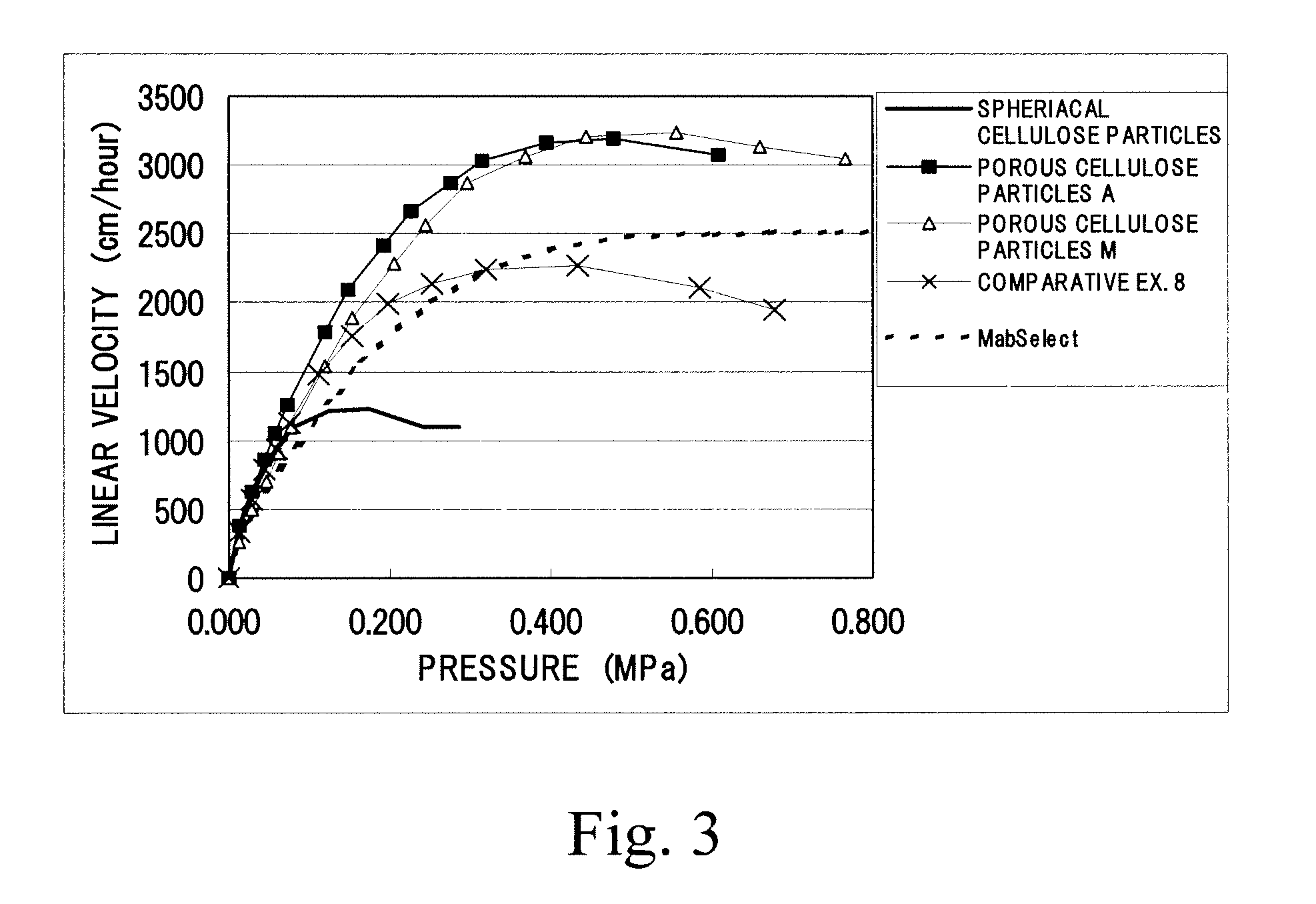Porous cellulose gel, method for producing the same and use thereof
a porous cellulose gel and cellulose technology, applied in the field of porous cellulose gel, can solve the problems of significant deterioration of the mechanical strength of the particles, poor strength of the conventional porous cellulose gel, and difficulty in high flow rate use, etc., to achieve excellent separation and purification capability, excellent resistance to flow, and high mechanical strength
- Summary
- Abstract
- Description
- Claims
- Application Information
AI Technical Summary
Benefits of technology
Problems solved by technology
Method used
Image
Examples
example 1
[0107]In Example 1, porous cellulose gels were investigated for change in resistance to flow upon changing the addition method of a crosslinking agent and an alkali.
[0108]1. Preparation of Spherical Cellulose Particles
[0109]In Test Example 1, spherical cellulose particles as a raw material for the porous cellulose gel were produced.
example 1-1
Production of Porous Cellulose Gel A
[0119](1) 100 g of the spherical cellulose particles obtained in Test Example 1 were added to a solution of 63 g of Na2SO4 dissolved in 132 g of pure water, followed by stirring. The mixture was further stirred for 2 hours continuously at a temperature of 50° C.
[0120](2) 3.5 g of a 45% by weight NaOH aqueous solution and 0.6 g of NaBH4 were added to the mixture, followed by stirring. The initial alkali concentration [NaOH] was 0.69% (w / w).
[0121](3) 48 g of a 45% by weight NaOH aqueous solution and 33 g of epichlorohydrin (ECH) were divided into 25 equal portions, and the portions were each added to the mixture with an interval of 15 minutes over about 6 hours under continuously stirring at 50° C.
[0122](4) After completing the addition, the mixture was reacted at a temperature of 50° C. for 16 hours.
[0123](5) After cooling the mixture to 40° C. or less, the mixture was neutralized by adding 14 g of acetic acid.
[0124](6) The reaction mixture was fil...
example 1-2
Production of Porous Cellulose Gel B
[0125](1) 100 g of the spherical cellulose particles obtained in Test Example 1 were added to a solution of 63 g of Na2SO4 dissolved in 132 g of pure water, followed by stirring. The mixture was further stirred for 2 hours continuously at a temperature of 50° C.
[0126](2) 3.5 g of a 45% by weight NaOH aqueous solution and 0.6 g of NaBH4 were added to the mixture, followed by stirring.
[0127](3) 48 g of a 45% by weight NaOH aqueous solution and 33 g of ECH were divided into 13 equal portions, and the portions were each added to the mixture with an interval of 15 minutes over about 3 hours under continuously stirring at 50° C.
[0128](4) After completing the addition, the mixture was reacted at a temperature of 50° C. for 16 hours.
[0129](5) After cooling the mixture to 40° C. or less, the mixture was neutralized by adding 14 g of acetic acid.
[0130](6) The reaction mixture was filtered to collect the resulting gel, which was washed with pure water by fil...
PUM
| Property | Measurement | Unit |
|---|---|---|
| pressure | aaaaa | aaaaa |
| linear velocity | aaaaa | aaaaa |
| inner diameter | aaaaa | aaaaa |
Abstract
Description
Claims
Application Information
 Login to View More
Login to View More - R&D
- Intellectual Property
- Life Sciences
- Materials
- Tech Scout
- Unparalleled Data Quality
- Higher Quality Content
- 60% Fewer Hallucinations
Browse by: Latest US Patents, China's latest patents, Technical Efficacy Thesaurus, Application Domain, Technology Topic, Popular Technical Reports.
© 2025 PatSnap. All rights reserved.Legal|Privacy policy|Modern Slavery Act Transparency Statement|Sitemap|About US| Contact US: help@patsnap.com



